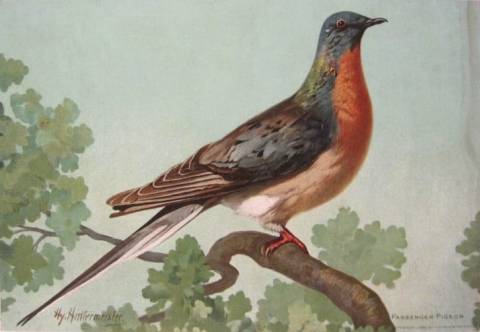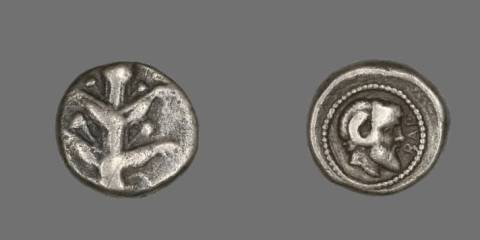According to early 19th century writer U.P. Hendrick, the Ansault pear was a fruit of the highest quality. We’ll have to take his word for it; the pear is believed to have disappeared shortly after those words were published. It’s one of the many fruits, vegetables, and meats that will never be tasted again. Whether they were eaten to extinction or succumbed to other factors, these are the foods from history you can no longer eat.

1. Ansault pear

Unlike other items on this list, the Ansault pear appeared relatively recently. First cultivated in Angers, France, in 1863, the fruit was prized for its delectable flesh. In the 1917 book The Pears of New York, Hendrick wrote, “the flesh is notable, and is described by the word buttery, so common in pear parlance, rather better than any other pear. The rich sweet flavor, and distinct but delicate perfume contribute to make the fruits of highest quality.”

Irregular trees and the rise of commercial farming contributed to the fruit's demise. Ansault pear trees were impractical to grow in large orchards, and commercial farmers weren’t interested in wasting time on temperamental strains when other pear varieties were available to them. Nurseries stopped growing the pear and it disappeared in the early 20th century.

2. Passenger pigeon
Humans feasted on the passenger pigeon for centuries. It was such a vital food source for the Seneca people that they named it jah’gowa, or “big bread.” Sadly, the North American bird was too tasty for its own good. Hunting, combined with habitat and food loss, reduced their numbers from up to 3 billion in the early 1800s to just one by 1900. That endling, a captive pigeon named Martha after America’s first First Lady, died at the Cincinatti Zoo in Ohio 1914.
3. Auroch
You may have heard aurochs mentioned in Game of Thrones, but this creature doesn’t belong in the same category as dragons. The real cattle species was domesticated 10,000 years ago in the early days of agriculture. They were big (“little below the elephant in size,” according to Julius Casear) and leaner than modern cows. After suffering from disease and habitat loss, the species dwindled until the last aurochs died in a Polish forest in the 17th century. New breeding efforts are aiming to revive the species—or at least produce a new animal that comes close. The beef from one aurochs-like cow bred in the modern era is reportedly juicy and tender with a “wild” taste.
4. Silphium
The ancient Greeks and Romans had many applications for this leek-flavored herb. Its stalks were cooked and eaten like a vegetable, while its sap was dried and grated over various dishes as seasoning. It had medicinal uses as well; it was apparently an effective form of birth control, and its heart-shaped seeds may be why we associate the shape with love today. Silphium only grew on a 125-by-35-mile strip of land in modern Libya, and it couldn't be farmed; demand for the precious herb quickly outpaced its natural supply. Pliny the Elder wrote that only one silphium plant was discovered during his lifetime, and it was gifted to the Roman emperor Nero sometime between 54 CE and 68 CE.
5. Dodo
Dutch sailors first visited the island chain of Mauritius in 1598, and less than two centuries later the archipelago's native dodo went extinct. Sailors relied on the birds as sustenance during long voyages at sea, but that isn't the primary reason they died out; habitat and the introduction of invasive species like rats and pigs ultimately wiped out the animal. Though humans did eat dodo meat, it was more for survival than taste. The last person to spot a dodo, an English sailor named Benjamin Harry, called its flesh very hard. The Dutch word for dodo was walghvodel, or “disgusting bird.
6. Steller’s sea cow
German naturalist Georg Wilhelm Steller identified the Steller's sea cow around the Commander Islands in the Bering Sea in 1741. Growing up to 30 feet long, it was significantly larger than the sea cows alive today. It was also pretty tasty. The salty meat was compared to corned beef, and the fat apparently tasted like almond oil. Sailors reportedly sipped the liquified blubber out of cups. Steller’s sea cows were a source of leather and lamp oil as well as meat, and the animal was hunted to extinction by 1768—less than 30 years after it was first described.
7. Mammoth
Wooly mammoth meat was an important component of the diets of our earliest human ancestors. We ate so much of them that hunting may have contributed to their extinction around 2000 BCE (though climate change was likely a bigger factor). Despite being extinct for thousands of years, several modern scientists and explorers have claimed they’ve tasted mammoth flesh. Because mammoth specimens are often found perfectly preserved in the frigid Arctic, they could technically be thawed and consumed. Unfortunately this doesn’t give us much insight into how the game tasted tens of thousands of years ago: Meat that’s been frozen for that long turns into rancid goo when defrosted. Bon appétit.
8. Taliaferro apple
Thomas Jefferson cultivated Taliaferro apples at Monticello. In an 1814 letter to his granddaughter, Jefferson said the small fruit produced unquestionably the finest cyder we have ever known, and more like wine than any liquor I have ever tasted which was not wine. Though it’s believed that the apple was lost with the estate’s original orchard, some horticulturists still hold out hope for its survival—but with few written descriptions of the fruit available, we likely wouldn’t be able to identify Jefferson’s apple even if we did find it.
9. Great auk
Modern humans primarily killed great auks for their down, leading to the species’s extinction in the mid-19th century, but prior to that they were hunted for dinner. Fossil evidence indicates that Neanderthals were cooking the flightless birds over campfires as far back as 100,000 years ago. The Beothuk people of what is now Newfoundland, Canada, used great auk eggs to make pudding.
10. Ancient bison
Before the American bison was nearly hunted to extinction in the 19th century, Bison antiquus, or the ancient bison, died out 10,000 years ago. Bones have been recovered showing evidence of butchering with tools. This suggests that Native Americans relied on the ancient bison for food as they did with its modern ancestors.
11. Old Cornish Cauliflower
Old Cornish cauliflower wasn't famous for its taste, but it did have one advantage over other varieties. The vegetable was resistant to a destructive plant virus called ringspot. In the 1940s, European growers began replacing Old Cornish cauliflower with a French variety that shipped better, and it was extinct by the 1950s. As a result, ringspot has decimated cauliflower crops in certain regions of Britain.
